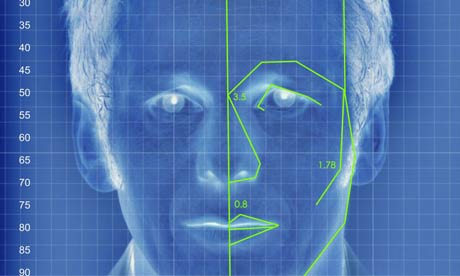In this spirit, I have a few ideas:
Tactile Holograms:
Using ultrasonic waves in 3D space to crescendo and resonate to create a physical feeling in the air.
http://www.youtube.com/watch?v=Y-P1zZAcPuw
http://gizmodo.com/5044624/ultrasound-haptic-devices-can-project-tactile-shapes-into-thin-air
Genetic Algorithms -
A genetic algorithm (GA) is a search heuristic that mimics the process of natural evolution. This heuristic is routinely used to generate useful solutions to optimization and search problems. Genetic algorithms belong to the larger class of evolutionary algorithms (EA), which generate solutions to optimization problems using techniques inspired by natural evolution, such as inheritance, mutation, selection, and crossover.
http://en.wikipedia.org/wiki/Genetic_algorithm
Neural Networks - or Artificial Neural Networks -
The term neural network was traditionally used to refer to a network or circuit of biological neurons. The modern usage of the term often refers to artificial neural networks, which are composed of artificial neurons or nodes. Thus the term has two distinct usages:
1. Biological neural networks are made up of real biological neurons that are connected or functionally related in a nervous system. In the field of neuroscience, they are often identified as groups of neurons that perform a specific physiological function in laboratory analysis.
2. Artificial neural networks are composed of interconnecting artificial neurons (programming constructs that mimic the properties of biological neurons). Artificial neural networks may either be used to gain an understanding of biological neural networks, or for solving artificial intelligence problems without necessarily creating a model of a real biological system. The real, biological nervous system is highly complex: artificial neural network algorithms attempt to abstract this complexity and focus on what may hypothetically matter most from an information processing point of view. Good performance (e.g. as measured by good predictive ability, low generalization error), or performance mimicking animal or human error patterns, can then be used as one source of evidence towards supporting the hypothesis that the abstraction really captured something important from the point of view of information processing in the brain.
http://en.wikipedia.org/wiki/Neural_network
Evolutionary Computation - or Programming -
In computer science, evolutionary computation is a subfield of artificial intelligence (more particularly computational intelligence) that involves combinatorial optimization problems.
Evolutionary computation uses iterative progress, such as growth or development in a population. This population is then selected in a guided random search using parallel processing to achieve the desired end. Such processes are often inspired by biological mechanisms of evolution.
As evolution can produce highly optimized processes and networks, it has many applications in computer science.
http://en.wikipedia.org/wiki/Evolutionary_computation
Distributed Computing -
Distributed computing is a field of computer science that studies distributed systems. A distributed system consists of multiple autonomous computers that communicate through a computer network. The computers interact with each other in order to achieve a common goal. A computer program that runs in a distributed system is called a distributed program, and distributed programming is the process of writing such programs.
Distributed computing also refers to the use of distributed systems to solve computational problems. In distributed computing, a problem is divided into many tasks, each of which is solved by one or more computers. They communicate with each other by message passing
http://en.wikipedia.org/wiki/Distributed_computing
Personally, I think these ideas should be considered, as they all can lead to higher-process artificial intelligence and group consciousness / collective reasoning. Take these ideas to their potential and they could be future changing.



















